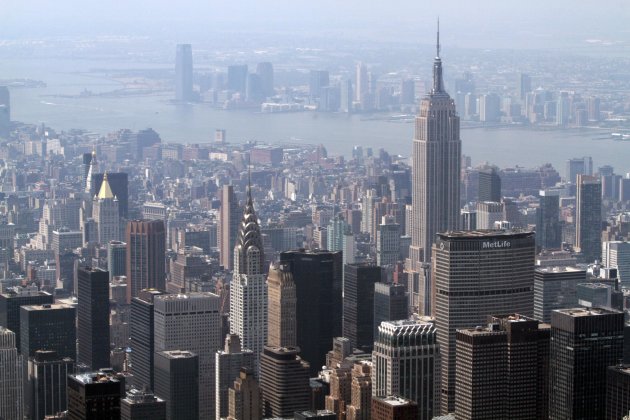
In an unusual twist, that same urban heat from buildings and cars may be slightly cooling the autumns in much of the Western United States, Eastern Europe and the Mediterranean, according to the study published Sunday in the scientific journal Nature Climate Change.
Meteorologists long have known
that cities are warmer than rural areas, with the heat of buildings and
cars, along with asphalt and roofs that absorb heat. That's called the urban heat island effect and it's long been thought that the heat stayed close to the cities.
But the study, based on a computer model
and the Northern Hemisphere, now suggests the heat does something else,
albeit indirectly. It travels about half a mile up into the air and
then its energy changes the high-altitude currents in the atmosphere
that dictate prevailing weather.
"Basically, it changes the flow." said Guang Zhang of the Scripps Institution of Oceanography in La Jolla, Calif. He wrote the paper with Aixue Hu at the National Center for Atmospheric Research in Boulder, Colo.
This doesn't change overall global temperature averages
significantly, unlike man-made greenhouse gases that cause global
warming. Instead it redistributes some of the heat, the scientists said.The changes seem to vary with the seasons and by region because of the way air currents flow at different times of the year. During the winter, the jet stream is altered and weakened, keeping cold air closer to the Arctic Circle and from dipping down as sharply, Hu explained.
The computer model showed that parts of Siberia and northwestern Canada may get, on average, an extra 1.4 degrees to 1.8 degrees Fahrenheit (0.8 to 1 degree Celsius) during the winter, which "may not be a bad thing," Zhang said. The effect isn't quite as much in northern North Dakota and Minnesota, where temperatures might be about half a degree warmer (0.3 degrees Celsius), and even less along the East Coast.
In contrast, Europe and the Pacific Northwest are cooled slightly in the winter from this effect. The jet stream changes prevent weather systems from bringing warmer air from the Atlantic to Europe and from the Pacific to the U.S. Northwest, thus cooling those areas a bit, he said.
The biggest cooling occurs in the fall, but Hu said he's not quite sure why that happens.
Several outside scientists said they were surprised by the study results, calling the work "intriguing" and "clever." But they said it would have to be shown in more than one computer model and in repeated experiments before they could accept this theory.
"It's an interesting and rationally carried out study," said David Parker, climate monitoring chief of the United Kingdom meteorology office. "We must be cautious until other models are used to test their hypothesis."

No comments:
Post a Comment